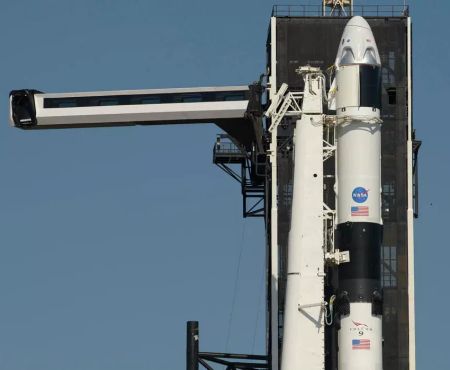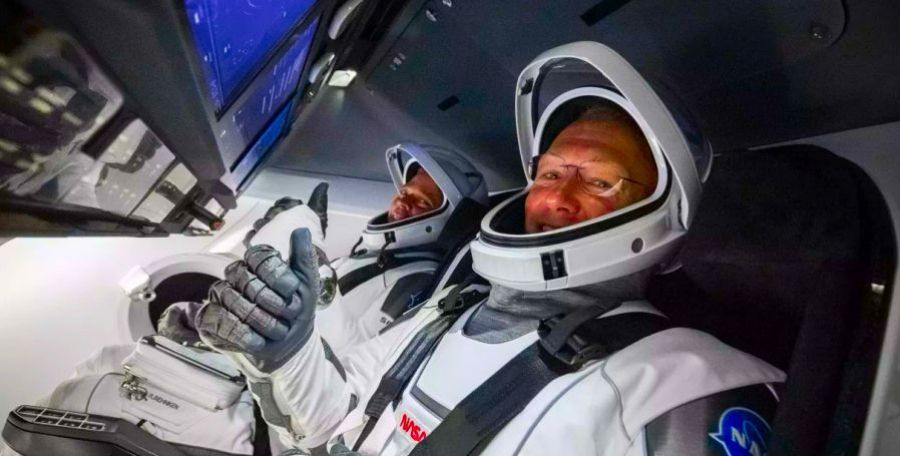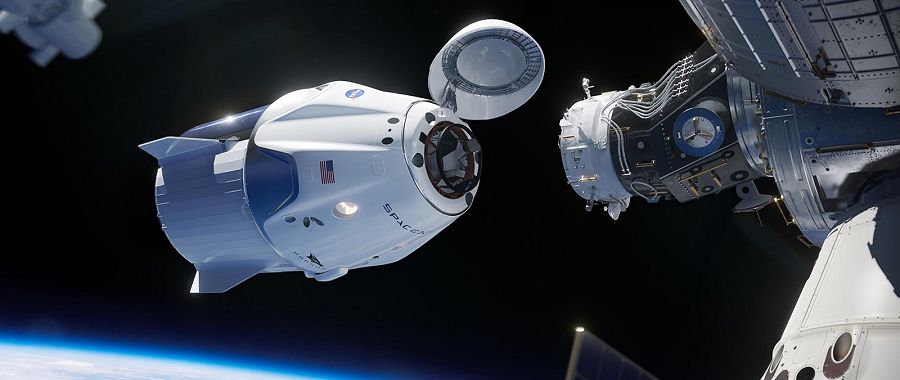FIRST HABIT FLIGHT OF SPACE X |
|
It is the first time that a manned mission has been operated by a private company. The spacecraft was designed by billionaire Elon Musk's company. Initially scheduled for Wednesday at 4.33 p.m. (10.33 p.m. Paris time), the launch could not take place. The countdown was interrupted seventeen minutes before takeoff due to poor weather conditions in the Kennedy Space Center. Taking advantage of a clearing, the rocket of the company founded by Elon Musk took off on Saturday at 3:22 p.m. (9:22 p.m. Paris time) and placed the Crew Dragon capsule in orbit unhindered ten minutes later. A successful takeoff Once the astronauts were on board, the rocket was full of fuel and the Falcon-9 was able to leave Florida soil. After two and a half minutes, the first floor stopped pushing and came off; the second stage engine started soon after. The body of the first stage began its controlled descent with retro-fuses to land on the barge in the Atlantic nine minutes and twenty-two seconds after takeoff. Less than three minutes later, the second stage of the rocket in turn detached from the capsule. As for the flight plan, astronauts Hurley and Behnken must automatically dock at the International Space Station (ISS) approximately nineteen hours after takeoff from the old lunar mission launch pad. They will support the three members of the Russian-American crew there in their scientific experiments - the primary mission of the ISS -, before leaving for Earth in their Crew Dragon capsule, which will land in the Atlantic Ocean before the end of summer. And if all the lights are green, after this test mission, another mission, the first known as “routine”, will be launched before the end of the year towards the station. The Crew Dragon capsule should then be in orbit and dock with the International Space Station (ISS) on Sunday. Reducing the American coat of arms With this inaugural flight, the Americans intend to restore their coat of arms and regain their independence by ending the monopoly of the Russians for the transportation of astronauts to the International Space Station (ISS), after ten years of hitchhiking on board Soyuz vessels . The last space mission "100% Made in USA" dates back almost a decade Savings for NASA For NASA, the Crew Dragon capsule is also a good way to save money. Because to continue sending astronauts into orbit, the United States has relied so far on the Russian Soyuz spacecraft, launched from the historic Baikonur Cosmodrome in present-day Kazakhstan. A costly collaboration: the price of a Soyuz seat cost the American taxpayer $ 86 million this year. By comparison, a seat on the Crew Dragon is estimated at $ 55 million. A considerable gain, when the American space shuttle, it returned to 450 million dollars per mission. The manned flight of the SpaceX capsule to the International Station opens a new era in space exploration. SpaceX also intends to make private passengers travel in orbit, or even in the ISS, perhaps next year. |
|
| Paul Emison for DayNewsWorld | |
 |
|






